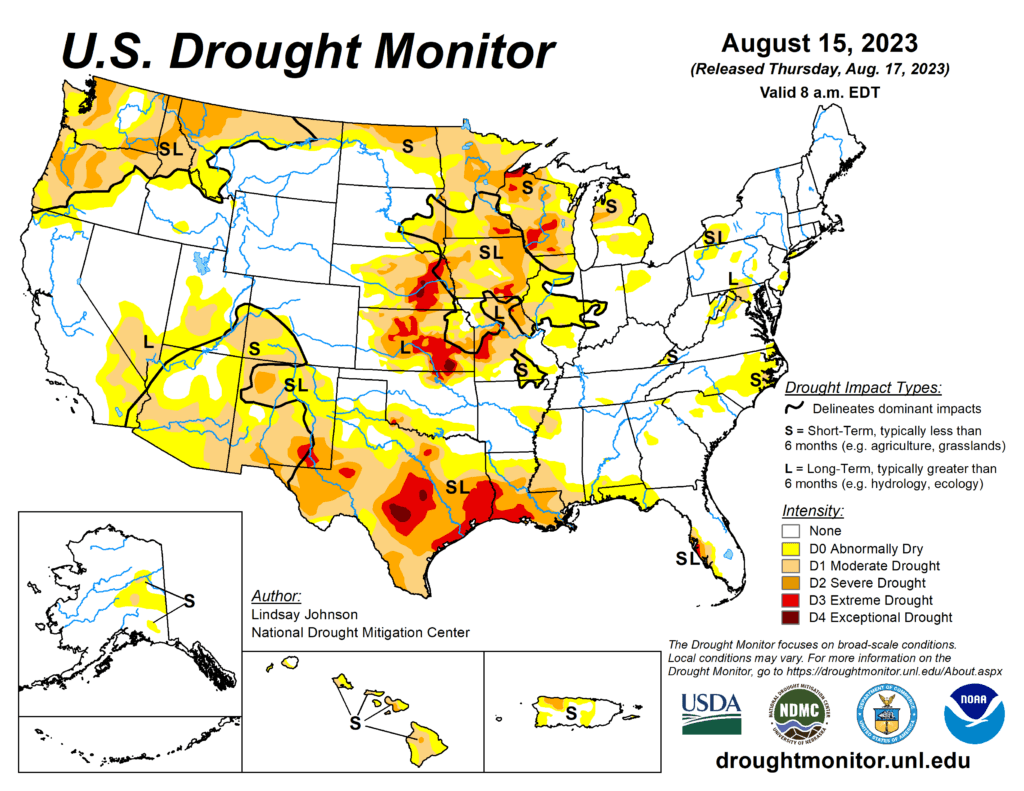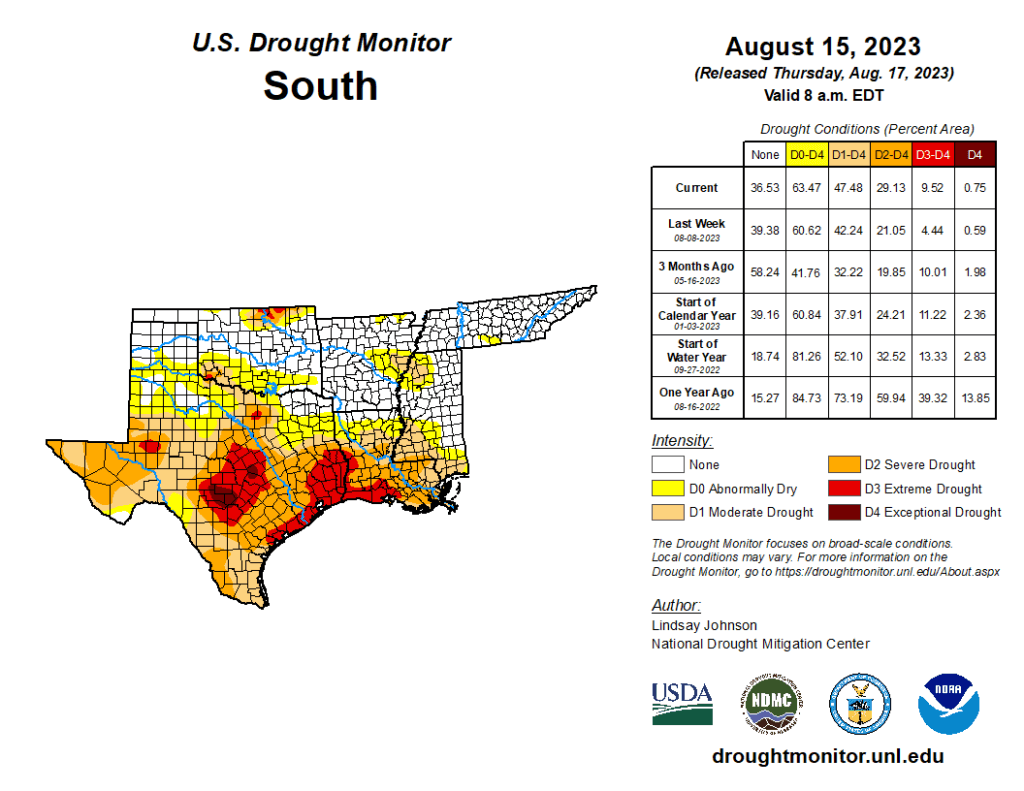
This week’s drought summary
Conditions continued from last week with the southern part of the country, where above-normal temperatures and mostly dry weather across the Rio Grande Valley, Texas, and the lower Mississippi Valley saw drought conditions continue to deteriorate. Drought intensified across Texas and the lower Mississippi Valley, particularly in eastern Texas, Louisiana and south-central Mississippi. The Monsoon remains suppressed with increasing short-term drought across Arizona, New Mexico and southwest Colorado. Frequent rounds of heavy rainfall occurred from the Northeast into the central Mississippi valley, into southern Missouri and the upper Midwest. The continuing west conditions are improving drought across parts of the Corn Belt and much of the southern and central Midwest. Farther to the north, drought continues to intensify across northern Wisconsin, North Dakota, Montana and Washington. Hawai’i continued to experience dry conditions, particularly on the leeward side of the islands. Conditions that came to a peak on August 8th with deadly Lahaina Fire on Maui.

South
Much of the South, from Texas to Mississippi, saw temperatures of 4 to 6 degrees above normal for the past two weeks. While northeastern Mississippi, Tennessee, northern Arkansas, and northeast Oklahoma, much of the rest of the south missed out. Northern Oklahoma and Arkansas benefited from this above-normal precipitation, allowing for the removal of D0 conditions. Meanwhile, D0 expanded in eastern Arkansas into northwest Mississippi due to continued dryness over the last 30 days, combined with extreme temperatures. A widespread expansion of dry conditions occurred from southern Mississippi into east-central Texas due to a continued lack of rainfall (about 8 – 14 inches over the last 90 days) combined with above normal temperatures. For example, rainfall in Southern Mississippi is well below normal for the year, with Crystal Springs only seeing 2.99 inches of rain for July and August. At the same time high temperatures of over 95 degrees have been recorded over 26 days — with 14 of those days over 100 degrees. Nearly all counties in southeastern and south-central Mississippi are in a burn ban, a commonality seen across the rest of the South. Many livestock producers are having to feed hay and have begun selling their livestock, leading to record cattle sales in various communities. Conditions from western Louisiana into eastern Texas continued to deteriorate, with D3 (extreme drought) expanding from the Louisiana boot heel into Houston, down to Corpus Christi. In Shelby County, Texas, little to no rain has fallen in the last 30 days, which has been accompanied by weeks of triple-digit heat. Agriculture across the southern Gulf Coast has seen enormous impacts due to this lack of precipitation and extreme heat. Eastern and central Texas also had extensive degradations with expansions of D2 (severe drought) through D4 (exceptional drought). Presently, Austin’s precipitation from June 1 to August 15 ranks as the fourth driest on record. Belton and Stillhouse Hollow reservoirs are also the driest on record for this time of year. Near Midland, Texas, conditions have been compared to the record-breaking drought of 2011. To the far West, parts of the Big Bend region have received 600% of normal weekly rainfall in the last week, resulting in improvement from D1 to D0. The Edwards Plateau saw some rainfall, but it was not enough to improve the long-term regional dryness. Soil moisture and streamflows through the region continue to decline. Southern Oklahoma also felt the effects of low precipitation and high temperatures, resulting in widespread expansion of D0 and degradation of areas of D0 into D1.
